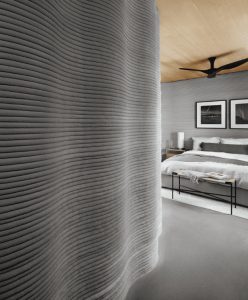In a humid environment like Florida, routine Heating, Ventilation, and Air-Conditioning (HVAC) is crucial. While most correlate the HVAC system with occupant comfort, few understand that it plays a critical role in maintaining the health of the occupants and that of your building materials/finishes. The American Society of Heating, Refrigeration, and Air Conditioning Engineers (ASHRAE) Standard 62.1 recommends that relative humidity indoors be maintained below 65 percent. This is due to the fact that relative humidity above 65 percent will promote the growth of mold.
So a bigger air-conditioning unit should (proportionally) remove more moisture from the air?! Right? WRONG**. Unfortunately, many homeowners are offered an “upgrade” to a larger unit and this line of thinking leaves them possibly susceptible to issues if certain factors aren’t considered.
To start, you have to understand that tonnage (or “tons”) refers to the amount of heat an air-conditioner can remove from your home within 1 hours time. A Manual J calculation is done to determine the appropriate size unit for your space, typically at the time of construction. That calculation sizes the tonnage needed, based on several calculation criteria. A very empirical calculation can be found HERE, and several calculators can assist with tonnage sizing. So lets say that we assume a ton of cooling capacity equates to 12,000 BTU (British Thermal Units). If you have installed a larger tonnage unit than what the Manual J (or other HVAC calcs) has recommended, you are cooling your space to the set point temperature much more quickly. I know! That sounds great! But it’s not. Cooling too quickly is great to limit the equipment run-time but terrible for maintaining indoor humidity levels. The dehumidification that your HVAC equipment provides is proportional to its run/cooling time. The appropriate sizing ensures that it runs long enough to both maintain occupant comport (controlling sensible heat) while appropriately dehumidifying the space (controlling latent heat). So it is advisable to ensure your HVAC technician confirm the appropriateness of changing the tonnage of your previously in-place systems when doing any replacements.
Now the fan use part: So again, most tend to be of the opinion that the more my system runs (by putting the fan in the ON position) the better! Again WRONG**. So the fan motor of the air-handler blows the warm air over the very cold coils. This is how the equipment helps us cool our space. What this also does is make the humidity within the warmed air condense on the cold coils. Think of your AC coils like the cold glass of ice/soda sitting on the counter top. You will see water droplets form on the glass. This is the same phenomenon that removes the moisture from the air in your homes, reducing humidity. Now, if you put the fan in the ON position, the cooling stops but the air keeps flowing over the coils. When it does, all of that liquid water, that was previously in the air, re-evaporates. The air blowing over the wet coils re-evaporates the water and puts it right back into the air. So it basically undoes some of the work it did to remove it in the first place, and the interior humidity rises as a result. If you find that your humidity levels are high and the set-point temperatures are routinely being met, you may want to consider talking to your HVAC professional about an in-line dehumidifier or stand-alone dehumidifiers to mitigate your condition.
Thank you all for reading, please feel free to comment below if any of this was unclear or if you have any questions. I would also welcome any comments on whether this was helpful or not.
**There may be situations or conditions that warrant up-sizing of your equipment or operation of the equipment with the fan in the ON position. Those changes, in our opinion, are best made by a HVAC professional and will typically be clear deviations from the norm.


